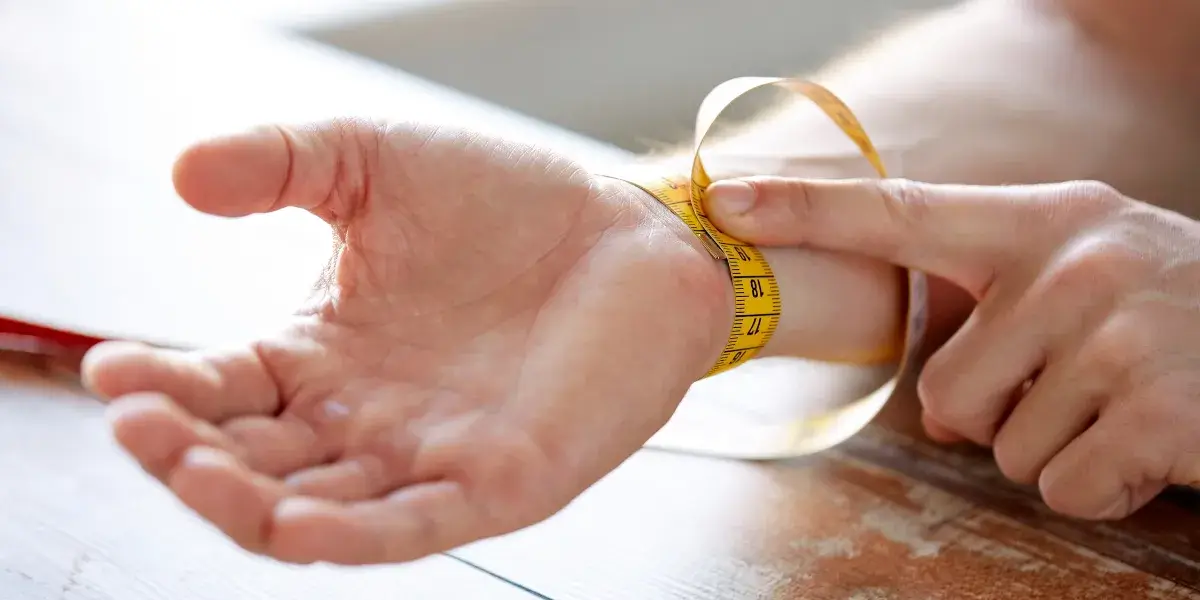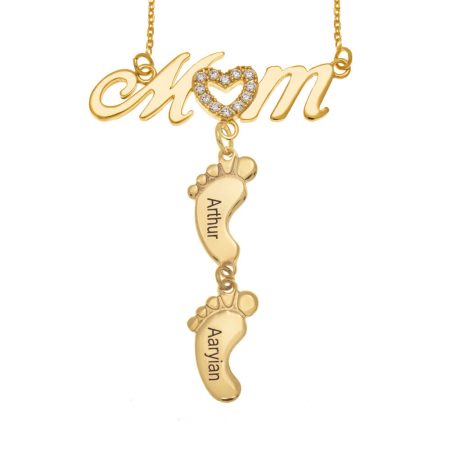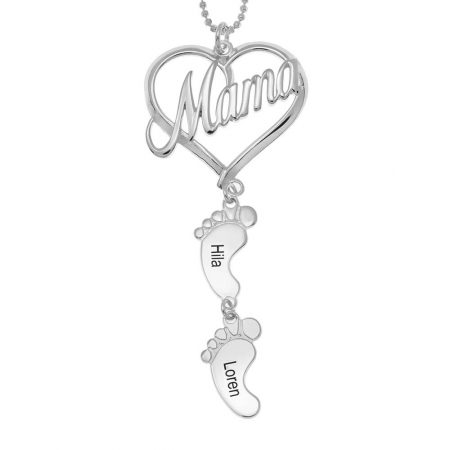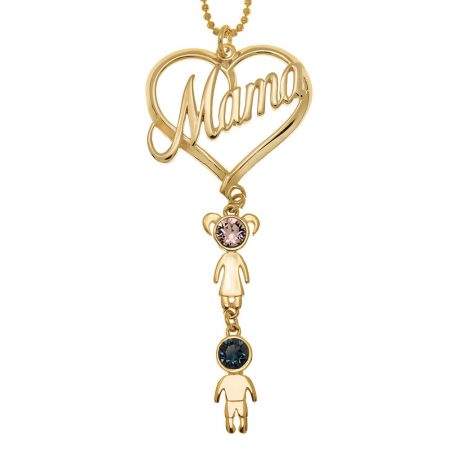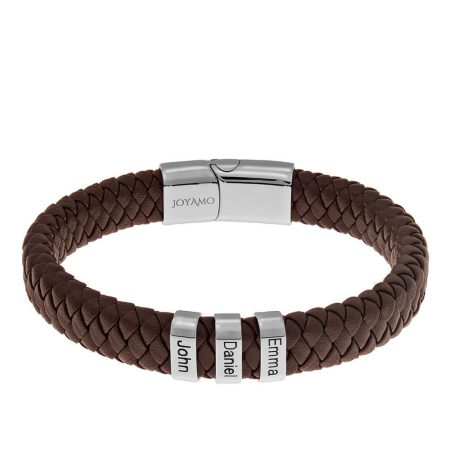Bracelets have a rich and diverse history, spanning thousands of years and encompassing various cultures and civilizations.
From ancient times to the present day, bracelets have served as symbols of status, spirituality, adornment, and even protection.
Ancient Origins
The roots of bracelets can be traced back to civilizations like Mesopotamia, Egypt, and China. In these societies, bracelets were handcrafted from materials such as stones, bones, shells, and wood. They were often embellished with designs and symbols.
These adornments served as talismans, believed to offer protection against malevolent forces.
Symbolism and Status
Throughout history, bracelets have carried various symbols and significance. In Egypt, for instance, they represented wealth and authority. Royalty and nobility wore designs crafted from metals and gemstones.
In Greece and Rome, bracelets denoted social status and standing within society. The intricate patterns and motifs reflected the wearer’s identity and associations.
Cultural Significance
Bracelets have held significance in societies around the world.
In Hindu tradition, bracelets called “kadas” are worn to symbolize devotion and protection, often decorated with symbols and scriptures.
Native American custom bracelets made from materials like turquoise and silver carried meanings representing ties to nature, ancestors, and the divine.
Evolution of Styles
Bracelets have evolved in their style. Design over time, mirroring shifts in fashion trends and technological progress. For instance, during the Renaissance era, bracelets became more intricate and decorative with work and gemstone embellishments.
In this period, sentimental jewelry such as lockets and charms on bracelets gained popularity as symbols of love, friendship, and cherished memories.
Modern Trends
Nowadays, bracelets remain a sought-after accessory in many styles. Whether it’s chain bracelets or statement cuffs and bangles, there is a range of designs to cater to different preferences and occasions.
Advancements in jewelry crafting techniques have introduced materials and creative designs that allow for enhanced artistry and personalization like personalized name bracelets and personalized monogram bracelets.
Conclusion
Throughout history, bracelets have stood the test of time as cherished adornments that embody significance while also being aesthetically pleasing.
From charms to style statements, bracelets remain intriguing and motivational surpassing eras and societies to become beloved adornments cherished by individuals worldwide.
Bracelets are accessories in a diverse range of styles, materials, and designs. From chains to cuffs, there exists a bracelet to suit every preference and event.
Discover some of the sought-after varieties, each one possessing its distinct allure and attraction.
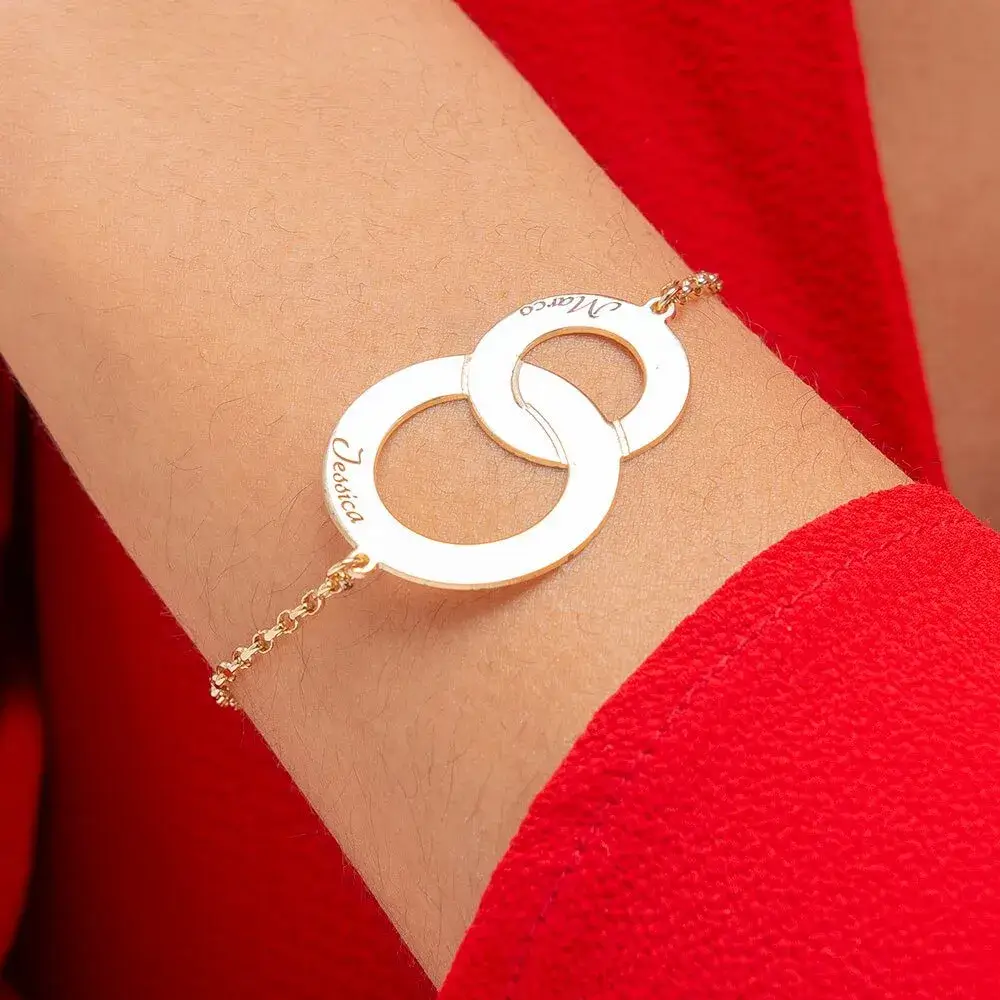
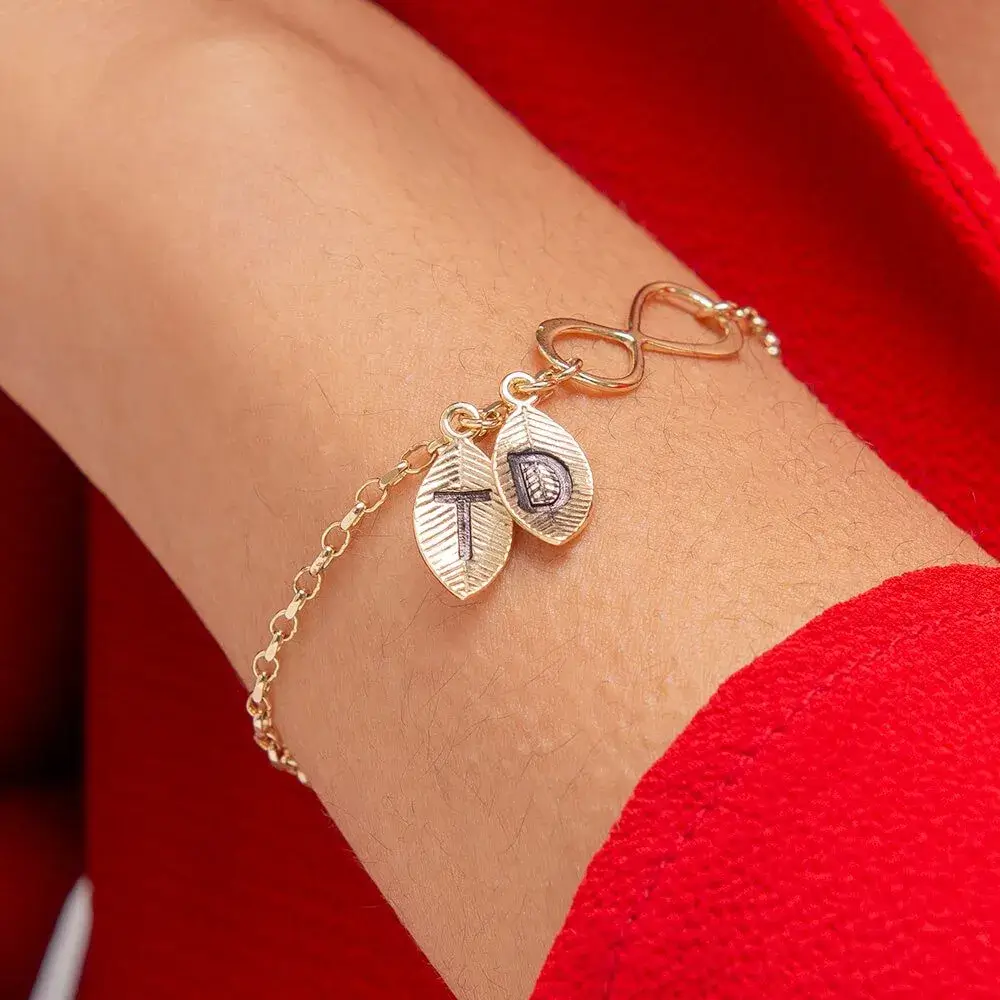
Types of bracelets
Bracelets are versatile accessories that come in a wide array of styles, materials, and designs.
From delicate chains to bold cuffs, there’s a bracelet for every taste and occasion.
Discover some of the most popular types of bracelets, each with its unique charm and appeal.
1. Chain Bracelets
Chain bracelets are timeless classics characterized by interlocking links of metal. They come in various styles, from delicate and dainty to chunky and bold. Chain bracelets can be adorned with charms, birthstones, beads, or gemstones for added flair, making them a versatile choice for both casual and formal wear.
2. Bangle Bracelets
Bangle bracelets are rigid, circular bands that slip over the wrist. They can be made from metal, wood, plastic, or other materials and come in various widths and designs. They hold engravings, birthstones, charms, and gemstones. Bangle bracelets can be worn individually or stacked for a layered look, making them a versatile and stylish accessory.
3. Cuff Bracelets
Cuff bracelets are wide, rigid bands that encircle the wrist. They often feature intricate designs or embellishments and can be made from metals like gold, silver, or brass. Cuff bracelets make a bold statement and can add a touch of glamour to any outfit.
4. Beaded Bracelets
Beaded bracelets are made from a string or wire adorned with beads of various materials, such as glass, stone, wood, or plastic. They come in a wide range of colors and patterns, making them a fun and versatile accessory for everyday wear.
5. Leather Bracelets
Leather bracelets are crafted from strips or bands of leather and often feature metal accents or embellishments. They have a rugged yet stylish appeal and can be worn alone or layered with other bracelets for a bohemian-inspired look.
6. Charm Bracelets
Charm bracelets are adorned with dangling charms or pendants that hold personal significance to the wearer. Charms can represent hobbies, interests, milestones, or memories, making charm bracelets a meaningful and customizable accessory.
7. Tennis Bracelets
Tennis bracelets are elegant and refined, featuring a line of uniformly sized gemstones, typically diamonds, set in a continuous row. They are characterized by their timeless beauty and understated sophistication, making them a popular choice for formal occasions.
Each type of bracelet offers a unique style and charm, allowing individuals to express their personality and taste through their choice of accessories.
| Type of Bracelet | Description |
|---|---|
| Chain Bracelets | Wide, rigid bands are often adorned with intricate designs. |
| Bangle Bracelets | Interlocking links of metal, are versatile and timeless. |
| Cuff Bracelets | Wide, rigid bands often adorned with intricate designs. |
| Beaded Bracelets | String or wire adorned with beads of various materials. |
| Leather Bracelets | Crafted from strips or bands of leather, rugged yet stylish. |
| Charm Bracelets | Adorned with dangling charms or pendants, customizable. |
| Tennis Bracelets | Line of uniformly sized gemstones, typically diamonds. |
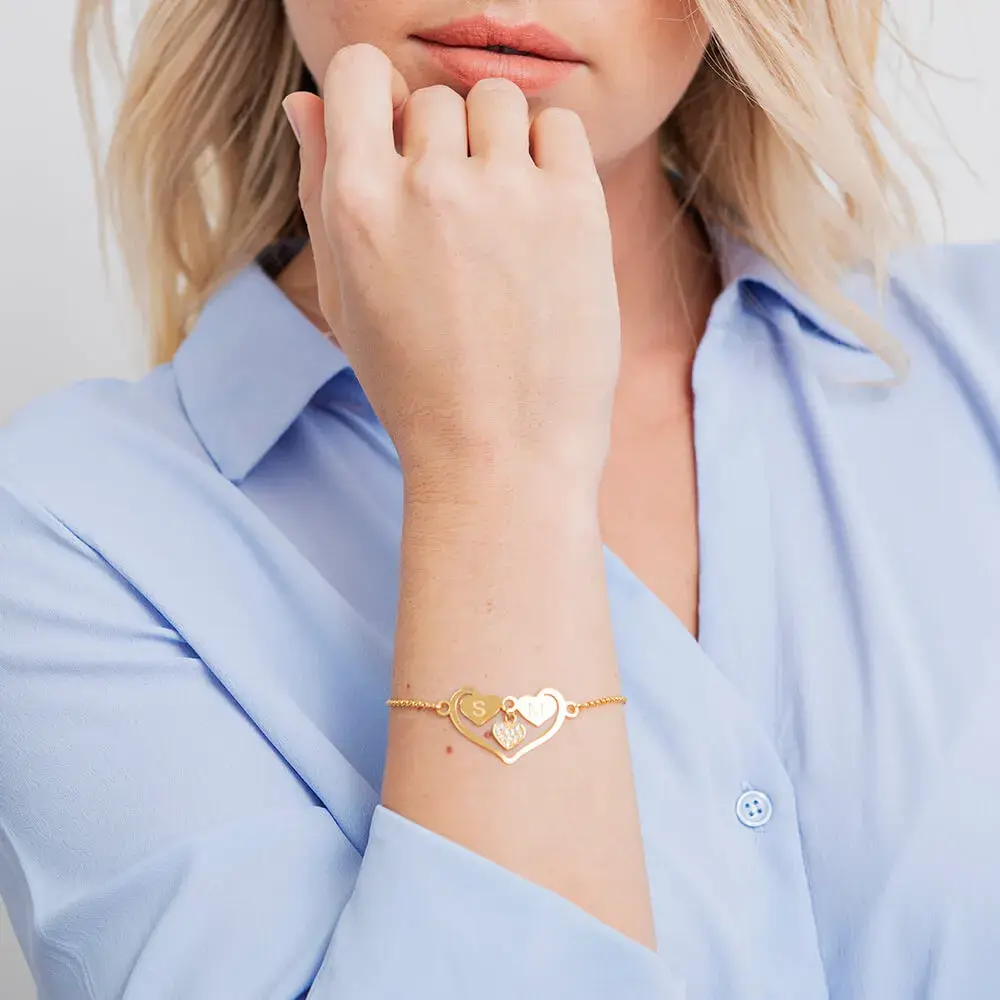

How to measure bracelet size a step-by-step guide
Bracelets are versatile accessories that add a touch of elegance and style to any outfit.
However, ensuring the perfect fit is essential for both comfort and aesthetics.
Here’s a comprehensive step-by-step guide on how to measure bracelet size for different types of bracelets.
1. Chain Bracelets
Step 1: Wrap a flexible measuring tape around your wrist at the point where you want the bracelet to sit. Make sure the tape is snug but not too tight.
Step 2: Note the measurement in inches or centimeters.
Step 3: Add approximately 0.5 to 1 inch (1.27 to 2.54 cm) to your wrist measurement to allow for movement and comfort, depending on your preference for a snug or loose fit.
2. Bangle Bracelets
Step 1: Place your hand palm up and bring your fingers together as if you’re putting on a bangle.
Step 2: Use a flexible measuring tape to measure the widest part of your hand, typically across the knuckles.
Step 3: Note the measurement in inches or centimeters.
Step 4: Compare your hand measurement to the inner diameter of the bangle bracelet you’re considering, ensuring it will comfortably slide over your hand without being too loose or too tight.
3. Cuff Bracelets
Step 1: Position the cuff bracelet on your wrist where you want it to sit.
Step 2: Use a flexible measuring tape to measure the circumference of your wrist at the point where the bracelet sits.
Step 3: Note the measurement in inches or centimeters.
Step 4: Adjust the cuff bracelet to ensure a comfortable fit, with enough room to slide it on and off easily without being too tight or too loose.
4. Beaded Bracelets
Step 1: Wrap a piece of string or ribbon around your wrist at the desired bracelet placement.
Step 2: Mark where the ends of the string meet and then measure the length with a ruler.
Step 3: Add approximately 0.5 to 1 inch (1.27 to 2.54 cm) to your wrist measurement to accommodate the size of the beads and ensure a comfortable fit.
5. Leather Bracelets
Step 1: Follow the same steps as measuring for a chain bracelet or bangle bracelet using a flexible measuring tape.
Step 2: Keep in mind that leather bracelets may stretch slightly over time, so it’s essential to choose a size that allows for this expansion without being too loose initially.
Measuring bracelet size accurately is key to ensuring a comfortable and stylish fit. These instructions will help you find the perfect size for your wrist, allowing you to enjoy your bracelet with confidence and flair.

Bracelet Size Chart
Bracelet size charts are essential tools for ensuring the perfect fit when purchasing bracelets online or in-store.
This chart provides measurements in both centimeters and inches, allowing customers to accurately determine their wrist size and select the appropriate bracelet size.
Discover the details of a typical bracelet size chart and its importance in finding the right fit.
Understanding Bracelet Size Charts
Bracelet size guides usually feature a range of wrist measurements along with bracelet sizes. The measurements are commonly divided into medium and large categories with instructions on how to measure the wrist accurately. Some guides may also provide tips on adjusting bracelet sizes for styles like cuffs or bangles.
Importance of Using a Bracelet Size Chart
Utilizing a bracelet size guide is essential to ensure a fit and avoid the inconvenience of returns or exchanges due to sizing. With bracelets available in styles such as chain bracelets, bangles, cuffs, and beaded bracelets having measurements is crucial, for selecting the right size for each type.
Bracelet Size Chart in Cm.
| Wrist Size (cm) | Bracelet Size (cm) |
|---|---|
| 14 | 15 – 16 |
| 15 | 16 – 17 |
| 16 | 17 – 18 |
| 17 | 18 – 19 |
| 18 | 19 – 20 |
| 19 | 20 – 21 |
Bracelet Size Chart in Inches
| Wrist Size (inches) | Bracelet Size (inches) |
|---|---|
| 5.5 | 6 – 6.5 |
| 6 | 6.5 – 7 |
| 6.5 | 7 – 7.5 |
| 7 | 7.5 – 8 |
| 7.5 | 8 – 8.5 |
| 8 | 8.5 – 9 |
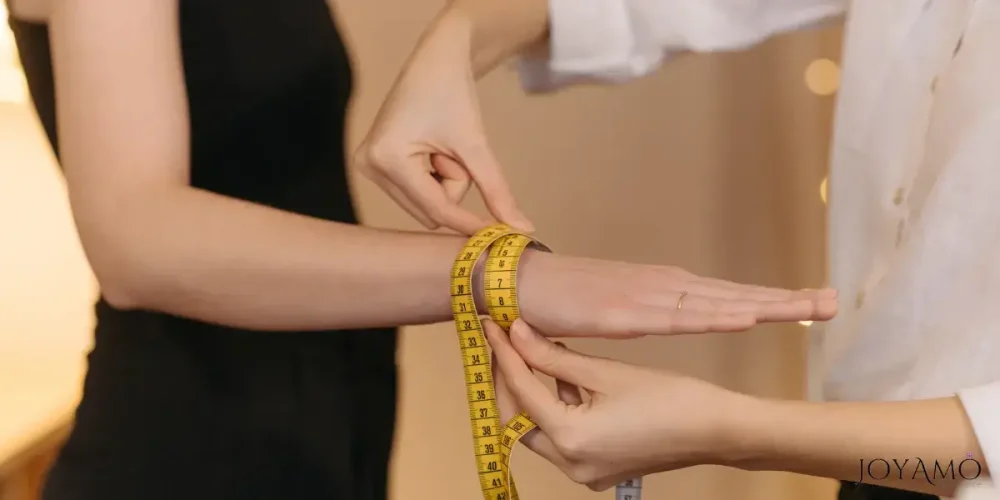
How to measure wrist size for bracelet
Measuring your wrist for a bracelet is crucial to ensure a comfortable and well-fitting accessory.
Follow these step-by-step instructions to accurately measure your wrist size:
- Gather Materials: You’ll need a flexible measuring tape or a strip of paper, a pen, and a ruler.
- Wrap Around Wrist: Place the measuring tape or paper strip around your wrist, just below the wrist bone, where you would typically wear a bracelet.
- Snug but Not Tight: Make sure the measuring tape or paper is wrapped snugly around your wrist, but not too tight. It should be comfortable and allow for slight movement.
- Mark the Measurement: If using a paper strip, mark where the end overlaps with a pen. If using a measuring tape, note the measurement where it meets.
- Measure the Length: Carefully remove the measuring tape or paper strip and lay it flat. Use a ruler to measure the length from the end to the mark you made.
- Record the Measurement: Note down the measurement in either inches or centimeters, depending on your preference or the bracelet size chart you’ll be referring to.
- Consider Fit: Keep in mind the type of fit you prefer for your bracelet. Some may prefer a snug fit, while others may prefer a looser fit.
- Refer to Size Chart: Use your wrist measurement to select the appropriate bracelet size from a size chart provided by the manufacturer. Be sure to check any specific sizing guidelines or recommendations provided.
Follow these simple steps to accurately measure your wrist size and ensure a perfect fit for your bracelet, allowing you to wear it comfortably and stylishly.
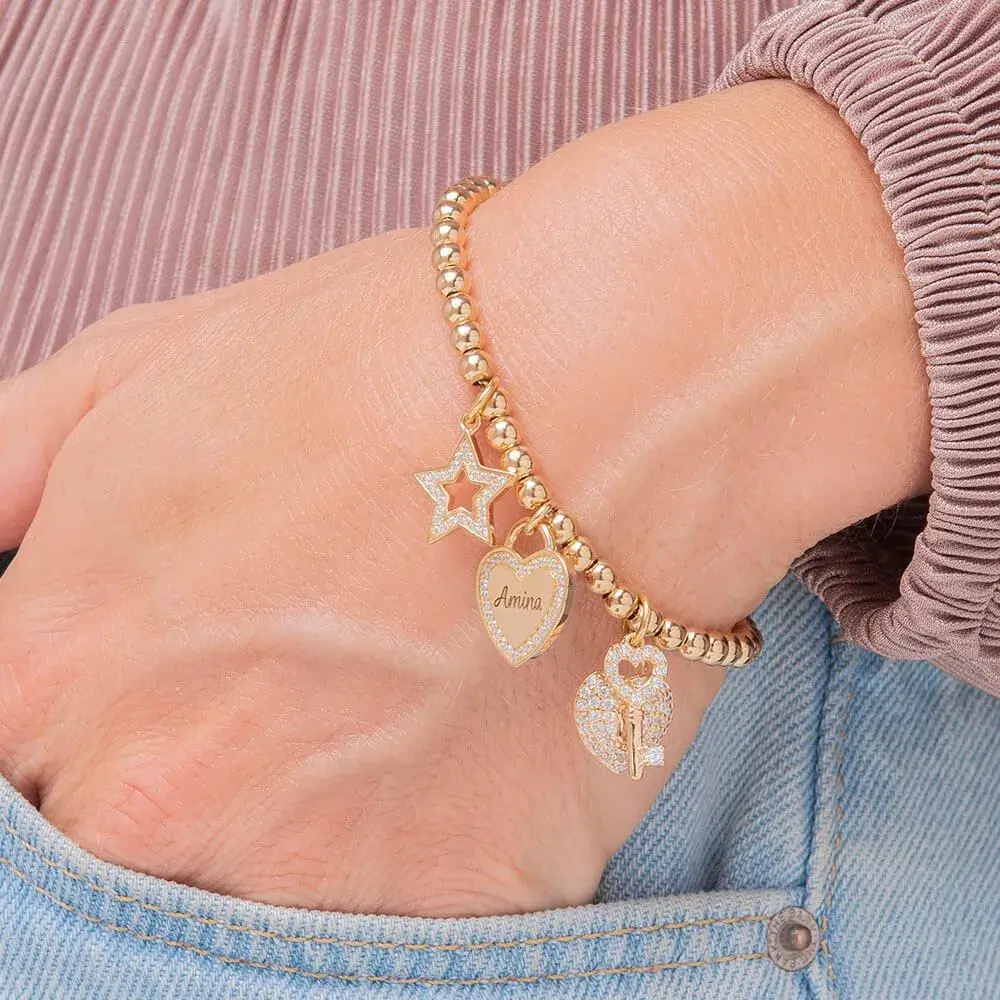
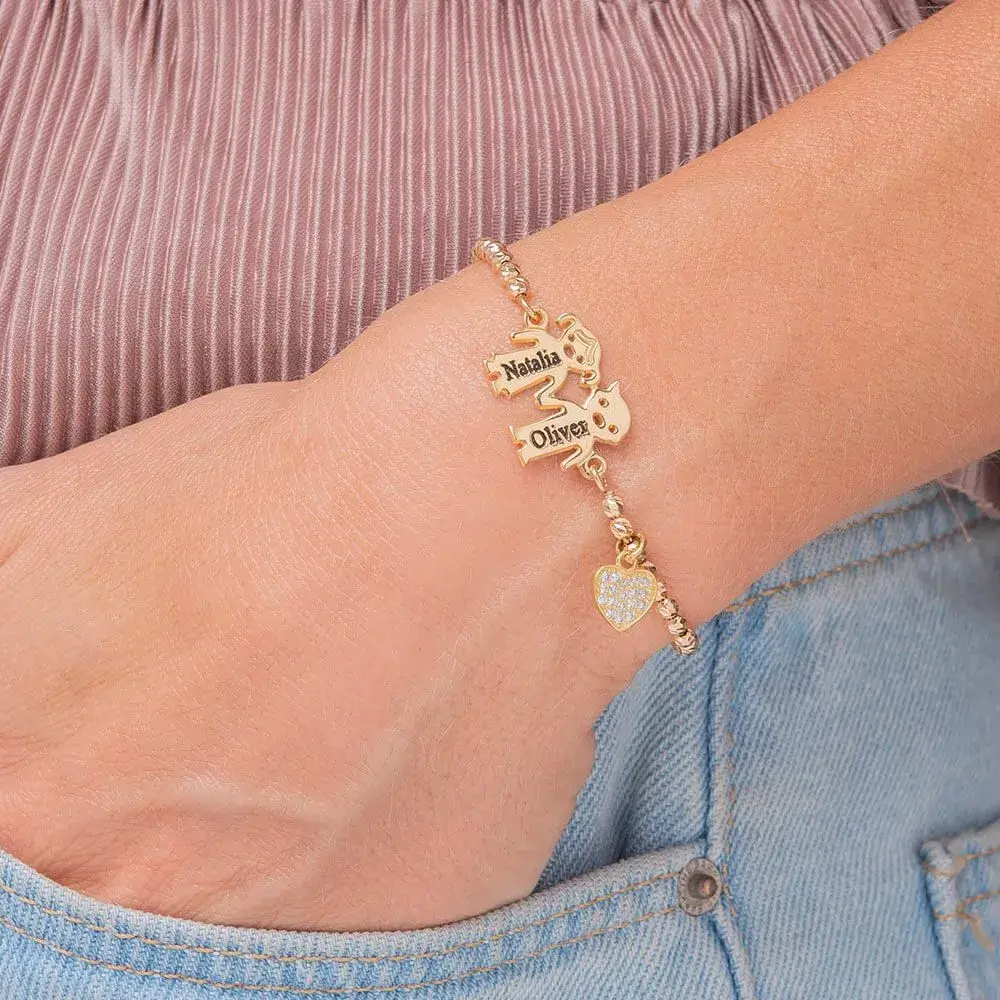
💡 How to measure bracelet size FAQ
✔ How do I know my bracelet size?
To determine your bracelet size use a measuring tape to measure the circumference of your wrist. A 7 inch bracelet typically suits a wrist circumference ranging from 6 to 6.5 inches. A 6 inch bracelet is best suited for wrists measuring around 5.5 to 6 inches. If you opt for an 8 inch bracelet it is for a wrist that measures about 7.5 to 8 inch. Always check the manufacturer’s size chart for sizing details.
✔ What size is a 7 inch bracelet?
A standard 7 inch bracelet is usually suitable for wrists with circumferences ranging from about 6 to 6.5 inches. Remember that certain bracelets may offer adjustability or extra links for a fit based on style and design preferences. Make sure to consult the manufacturer’s sizing guidelines and charts to ensure a perfect fit.
✔ How big is 6 inches for a bracelet?
A typical six inch bracelet is crafted to accommodate wrists measuring approximately between 5.5 and six inches in circumference. However, the actual fit can vary depending on factors, like the style, width, and flexibility of the bracelet chosen. Take these aspects into account when selecting the size for your wrist.
✔ Is an 8 inch bracelet big?
When you want to know if an 8 inch bracelet is large it’s good to keep in mind that it’s designed for wrists measuring around 7.5 to 8 inches. However, the perceived size can differ based on individual wrist sizes and preferences. Factors like the bracelet’s style width and flexibility should be considered when deciding if it’s suitable for you. To get a fit always check the manufacturer’s size chart and guidelines to ensure a fashionable look.
✔ How to measure wrist size for bracelet?
If you’re wondering how to measure your wrist size for a bracelet you can use a measuring tape or even a strip of paper. Simply wrap it around your wrist snugly below the wrist bone mark where it meets then measure that length with a ruler. This will give you your wrist size. The tape or paper mustn’t be too tight or loose, for a measurement. Once you have your wrist measurement refer to bracelet size charts provided by manufacturers to choose the bracelet size for your wrist.
 SHIPPING
SHIPPING
